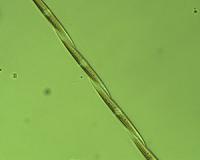| . |  |
. |
Penang, Malaysia (AFP) Nov 10, 2010 Overfishing in Southeast Asian seas has left garoupas and sea bass in dire straits, searching for mates on denuded seabeds, according to experts alarmed by ever-declining catches. Marine scientists and fishermen say that popular fish species -- especially the large and valuable ones -- have been caught indiscriminately, causing numbers to plunge dramatically. For big fish "finding a mate is a difficult task. They have to swim a long distance to find one," said Edward Allison from the World Fish Center in Malaysia's northern resort island of Penang. One of the culprits is bottom trawling, which involves dragging huge, heavy nets along the sea floor. Large metal plates and rubber wheels attached to the nets move along the bottom and crush nearly everything in their path. Allison said the habitat for young fish, or fry, is also shrinking because the mangrove swamps which provide food and protection are being obliterated by coastal development including tourist resorts. Demand for top-quality seafood, from Southeast Asian nations themselves and from Hong Kong and China, is another major factor behind the emptying of the seas. According to World Fish data, there were 10 times more fish in the Gulf of Thailand in 1965 than 30 years later. In Malaysia the decline was between 80 and 90 percent while in the Philippines it is estimated that there was a 46-78 percent dropoff in fish stocks. There is little data from other countries without the resources to carry out the studies, but World Fish believes the rate of decline in those three countries is reflected across Southeast Asia. In Tanjung Karang, a fishing village in central Malaysia on the banks of the murky Tengi river which flows into the Malacca Strait, coastal fishermen are gloomy as they come ashore to sell their daily catch. After spending four hours at sea Kamarul Nizam, 35, managed to net only a few kilos of small prawns and cheap catfish. He sells them to Gan Soon Heng, a wholesaler who has been in the business for more than two decades. Sitting in his wooden shop on the banks of the Tengi, Gan gives Kamarul about 30 dollars -- meagre pay for a hard day's work, as half is eaten up in costs. Gan shows off a 37 kilo (81 pound) stingray, a 12 kilo garoupa and a long Spanish mackerel. "Such a big stingray is rare. Even the 12 kilo garoupa is considered small. Twenty years ago you could catch much bigger fishes. Now you only get small ones," he said as he pointed to a few palm-sized stingrays lying in an icebox. Tiew Kian Hap, 44, has fished the Malacca Strait for three decades, trawling for giant stingray, redfish and black pomfret. "If we catch them we can make a profit. But their numbers now are much less. Also there are a lot of fishing boats out there hunting for them too," he said. Instead, he mostly hauls in tiddlers that go to make belachan, a strong-smelling fish paste that is a vital ingredient in some popular Malaysian dishes. Tiew lamented the lack of enforcement that sees big trawlers encroach close to the shore, wiping out the fry that, if left undisturbed, would grow into a valuable catch. "Popular fishes like kambong or mackerel which we hope to catch get wiped out because even the small ones -- one to two inches -- are caught when their nets sweep the ocean floor," he said. "There is no point reporting it because no action is taken." Another fisherman, Ong Chee Hooi, 33, said the decline had been sharp in the past five years, and that even the mud crabs that used to be plentiful in the mangroves were disappearing. "Their numbers have fallen. Factories and houses put up by the coast are polluting the water and this is killing the mangrove swamps," he said. Allison said the use of dynamite and cyanide to fish in coral reefs, common in Indonesia and the Philippines, also poses a serious threat. He urged enforcement authorities to adopt conservation measures such as encouraging the use of hook and line traps that net only targeted fish, and aquaculture to produce popular species. "The aquatic system is quite resilient and they can recover if we can remove some of the pressures. What is needed is the political will and motivation to do so," he said.
Share This Article With Planet Earth
Related Links Water News - Science, Technology and Politics
 Iron Stimulates Blooms Of Toxin-Producing Algae In Open Ocean
Iron Stimulates Blooms Of Toxin-Producing Algae In Open OceanSanta Cruz, CA (SPX) Nov 09, 2010 A team of marine scientists has found that toxin-producing algae once thought to be limited to coastal waters are also common in the open ocean, where the addition of iron from natural or artificial sources can stimulate rapid growth of the harmful algae. The new findings, reported this week in the Proceedings of the National Academy of Sciences, add to concerns about proposals to use iron ... read more |
|
| The content herein, unless otherwise known to be public domain, are Copyright 1995-2010 - SpaceDaily. AFP and UPI Wire Stories are copyright Agence France-Presse and United Press International. ESA Portal Reports are copyright European Space Agency. All NASA sourced material is public domain. Additional copyrights may apply in whole or part to other bona fide parties. Advertising does not imply endorsement,agreement or approval of any opinions, statements or information provided by SpaceDaily on any Web page published or hosted by SpaceDaily. Privacy Statement |